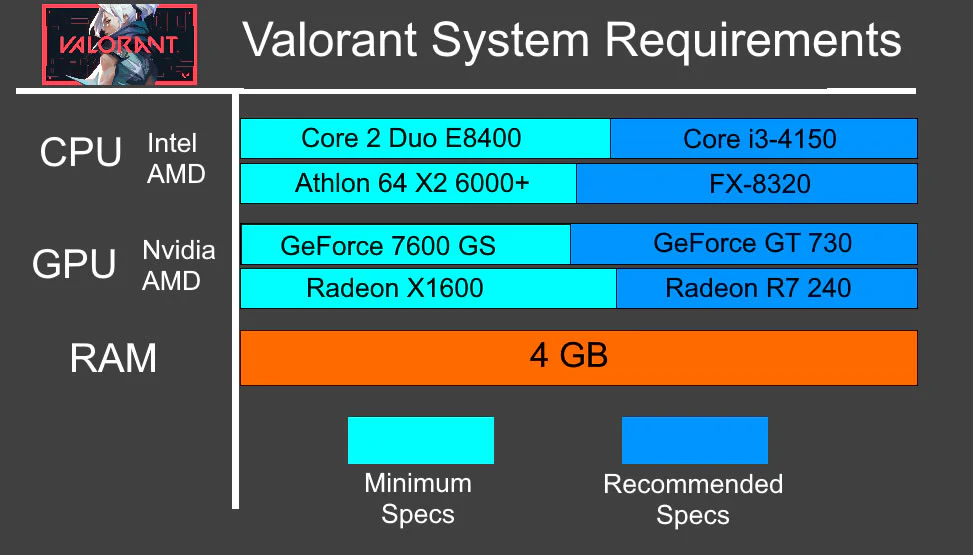Counter-Strike 2 (CS2) has rapidly gained popularity among gamers, raising questions about its hardware demands. Understanding whether CS2 is primarily CPU or GPU intensive is crucial for players looking to optimize their gaming experience. as this knowledge can guide hardware upgrades and settings adjustments for better performance.
“Counter-Strike 2 (CS2) is primarily GPU-intensive, but it also requires a capable CPU for optimal performance. A balanced system is essential for the best gameplay experience.”
In this article, We will discuss “ is cs2 CPU or GPU intensive”
Table of Contents
What Does It Mean to Be CPU or GPU Intensive?

Before assessing CS2, it’s vital to grasp the concepts of CPU and GPU intensive tasks:
CPU Intensive:
Tasks that require significant processing power from the Central Processing Unit (CPU) are classified as CPU intensive. These often include complex calculations, simulations, artificial intelligence, and game logic. In gaming, a CPU’s ability to handle multiple threads and processes can significantly impact performance, especially in large-scale multiplayer environments.
GPU Intensive:
In contrast, GPU-intensive tasks rely heavily on the Graphics Processing Unit (GPU) for rendering images and video. High-resolution textures, complex visual effects, and detailed 3D models are all GPU-dependent. In modern gaming, the demand for realistic graphics and smooth frame rates makes the GPU a crucial component.
Also Read: How Much RPM For CPU Fan – How Much Do You Really Need!
The Nature of CS2: A Balance Between CPU and GPU:
GPU Intensive Elements:
CS2 is fundamentally a GPU-intensive game for several reasons:
Advanced Graphics Engine:
The game features an advanced graphics engine that delivers stunning visuals, including realistic lighting, shadows, and reflections. High-quality textures and detailed environments require substantial GPU power to render smoothly. making a powerful graphics card essential for an immersive gaming experience. As a result, players should prioritize GPU upgrades for optimal performance.
High Frame Rate Requirements:
Competitive players thrive on high frame rates. A minimum of 60 FPS is often necessary for a responsive gaming experience, especially in fast-paced scenarios typical of CS2. Achieving these frame rates at higher settings relies heavily on the GPU’s capabilities. making a high-performance graphics card a top priority for serious gamers.
Visual Effects:
CS2 employs various visual effects, such as particle systems for explosions and dynamic environmental changes. These effects place a considerable burden on the GPU, demanding higher processing power to maintain visual fidelity without sacrificing performance. Consequently, a robust GPU is essential to handle these demanding graphical elements effectively.
CPU Intensive Elements:
While CS2 predominantly relies on the GPU, several CPU-intensive factors are equally important:
Game Logic and Physics Calculations:

The CPU manages game logic, including player actions, hit detection, and physics simulations. Accurate hit registration is crucial in a competitive game like CS2, where precision is key. If the CPU cannot keep up, players may experience lag or discrepancies between their actions and the game’s response. ultimately impacting overall gameplay experience and competitiveness.
Multiplayer Networking:
CS2’s online multiplayer mode necessitates robust CPU performance for effective network management. The CPU handles data packets, synchronizes player actions, and ensures a stable connection, which is vital for smooth gameplay. Poor CPU performance can lead to latency issues and a frustrating gaming experience. making a capable processor essential for competitive play.
AI and Bot Management:
If playing against AI opponents or bots, the CPU is responsible for managing their behavior and actions. This includes pathfinding, decision-making, and coordination, which all require processing power. making a powerful CPU crucial for maintaining a smooth and engaging experience when facing AI challenges in CS2. Additionally, efficient CPU performance ensures that the game remains responsive even with multiple AI entities on-screen.
Also Read: No Or Unknown Cpufreq Driver Is Active On This CPU – Fixing No Cpufreq Driver Active Error!
System Requirements:
To enjoy CS2 at its best, it’s essential to meet both the CPU and GPU requirements. Here are the minimum and recommended specs for optimal gameplay:
Minimum Requirements:
- CPU: Dual-core processor (Intel Core i3 or AMD equivalent).
- GPU: NVIDIA GeForce GTX 660 or AMD Radeon HD 7950.
- RAM: 8GB.
Recommended Requirements:
- CPU: Quad-core processor (Intel Core i5 or AMD Ryzen 5).
- GPU: NVIDIA GeForce GTX 1060 or AMD Radeon RX 580 for high settings at 1080p.
- RAM: 16GB for smoother multitasking and performance.
Identifying Bottlenecks in Your System:

When playing CS2, it’s essential to monitor your system’s performance to identify whether the CPU or GPU is the bottleneck:
Use Performance Monitoring Tools:
Applications like MSI Afterburner, HWMonitor, or built-in task managers can provide insights into CPU and GPU usage during gameplay. High GPU usage paired with low FPS may indicate that your GPU is the limiting factor. Conversely, if the CPU usage is consistently high while the GPU is underutilized, the CPU may be struggling to keep up.
Adjust In-Game Settings:
If you experience performance issues, consider adjusting the in-game graphics settings. Lowering resolution or disabling certain visual effects can reduce the GPU load, while adjusting settings related to draw distance or detail may alleviate CPU strain.
Also Read: How To Measure CPU Fan – Speed With BIOS, Software, And Controllers!
Finding the Right Balance:
Achieving the best performance in CS2 involves striking a balance between CPU and GPU:
- Upgrade Your GPU: If you’re looking for improved graphics and frame rates, consider upgrading to a more powerful graphics card. This will enhance visual quality and help you maintain higher frame rates.
- Optimize Your CPU: A strong CPU is crucial for managing game logic and ensuring network stability. If you experience lag during gameplay, an upgrade may be necessary to keep pace with modern gaming demands.
- Monitor System Temperatures: Both CPU and GPU can throttle performance if temperatures rise too high. Ensure proper cooling solutions are in place, such as adequate airflow in your case, quality thermal paste application, and potentially upgrading your cooling system.
- Utilize Game Mode Features: Many modern operating systems offer game mode features that optimize CPU and GPU resources for gaming. Enabling these features can help prioritize your gaming experience.
Dynamic Fan Control: PWM for Smart Cooling:
Modern CPUs and GPUs often support PWM (pulse-width modulation) technology, which allows dynamic control of fan speeds based on temperature. This technology enables fans to adjust their RPM automatically, maintaining optimal cooling while minimizing noise during less intensive tasks. By using PWM, you can ensure that your system stays cool without excessive noise during quieter gaming sessions.
FAQ’s
Here are five FAQs with short answers related to whether CS2 is CPU or GPU intensive:
1. Is CS2 primarily CPU or GPU intensive?
CS2 is primarily GPU intensive due to its high-quality graphics and frame rate demands, but it also requires a capable CPU for game logic and network management.
2.Why is a strong CPU important for CS2?
A capable CPU manages game logic, physics calculations, and network performance, ensuring smooth online play and accurate hit registration.
3. How can I determine if my CPU or GPU is the bottleneck in CS2?
Use performance monitoring tools to check CPU and GPU usage during gameplay. High CPU usage with low GPU usage indicates a CPU bottleneck, while the opposite suggests a GPU bottleneck.
4. Can I improve my CS2 performance without upgrading my hardware?
Yes, optimizing in-game settings, enabling game mode features, and ensuring proper cooling can enhance performance without hardware upgrades.
5. Does using dynamic fan control help with CS2 performance?
Yes, dynamic fan control (like PWM) adjusts fan speeds based on temperature, maintaining optimal cooling and reducing noise, which can enhance the overall gaming experience.
Conclusion
In conclusion, CS2 is primarily GPU intensive, benefiting significantly from a powerful graphics card to deliver high-quality visuals and frame rates. However, a capable CPU is also essential for handling game logic and networking efficiently. Balancing both components is crucial for achieving optimal performance in the game.

